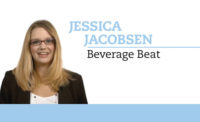Beverage Beat
Study shows consumers eager to return to restaurant dining
Patronage will hinge new expectations for digital support

When the coronavirus upended consumers’ daily lives, one of the industries that took an early, hard hit was foodservice and on-premise sectors. Many of us have embraced this time to explore new recipes and leverage our inner mixologist, but it seems that novelty is waning.
According to a study released by Redwood City, Calif.-based Oracle Food and Beverage, 59 percent of U.S. consumers and 47 percent of U.K. consumers plan to dineout as soon as they are able. When doing so, consumers also are showing a hunger spend for independent establishments with 39 percent for U.S. survey-takers and 36 percent for U.K. respondents.
Consumers support for local also was present during stay-at-home orders as 40 percent of U.S. respondents and 36 percent of U.K. survey-takers stated that they purchased more frequently from independent operators.
This also is taking shape in the way of brand loyalty. According to the study, 33 percent of overall respondents noted an increase in loyalty to establishments visited during stay-at-home orders. Additionally, 43 percent of millennials reported an increase in loyalty.
However, consumers have voiced that expectations for dining experiences have shifted, as 40 percent of U.S. respondents and 39 percent of U.K. survey-takers indicated that they would feel safer if they could view the menu on a mobile device. Additionally, 35 percent and 31 percent of U.S. and U.K. respondents, respectively, would like to be able to pay on a mobile device.
"Throughout the globe, we have seen communities rallying around local independents to ensure they make it through to the other side of this crisis," said Simon de Montfort Walker, senior vice president and general manager for Oracle Food and Beverage, in a statement. "But while consumers are anxious to get back out there to eat, they come with new expectations on everything from menus to the technology used to increase safety. Execution will play a pivotal role in building customer trust and ensuring today's diners remain loyal."
When it comes to payment, consumers are requesting the use of kiosks or tablets that could be regularly cleaned by restaurant staff members with 30 percent of overall respondents indicating as such.
As foodservice and on-premise outlets seek out recovery solutions, data suggests that consumers will be there to support them, but only under certain safety conditions.
Looking for a reprint of this article?
From high-res PDFs to custom plaques, order your copy today!







